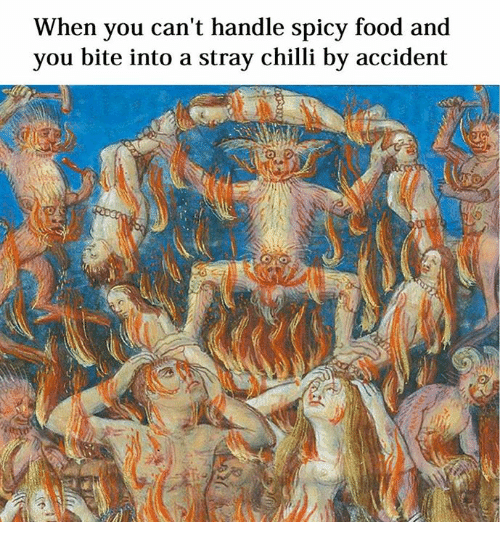Kristen is away at a conference in San Francisco….so that means today, you get ME! And despite what the title implies, I’m not here to talk about the failed New Year’s diet (ask me if I even bothered).

No, today, you get a super special fun rant from me about food in the fantasy genre. Why? Because I can. But also, because it’s a real problem.
Not to mention that our characters are going to end up with some serious nutritional and health issues if all they ever eat are bread and cheese.
Don’t get me wrong, I love me some bread and cheese as much as the next person. But…even if the story is loosely Ye Olde Faux Medieval, there seriously has to be more than just bread and cheese in the larder.
It seems like such a small thing, doesn’t it? Of course Our Heroes™ are going to pack food for their quest or steal it along the way (or buy it...why do they never have money to buy stuff?). Bread and cheese seems simple and safe to use. Yet, these details, as seemingly throwaway as they are, define the difference between amateur hour and professionals.
Because why have bread and cheese when you could have dried figs and honey, sweet spiced mead, smoked meats with cracked pepper crusts, and hard savory biscuits that soften when used to soak up the juices of any meat or stew cooked over the campfire?
The Locavore Diet
If we are dealing with a fantasy setting that is pre-any-kind-of-industrialization (magic notwithstanding), then there are certain things we have to keep in mind.
Good world-building includes consideration of climate and geography. Do characters live in tropical mountains regions or cold mountain regions? This question naturally leads us to comparisons with more familiar, Earthly parallels. For example, tropical mountains could easily be the rain forests and mountains of Rwanda and the Congo. Cold mountain regions could be Scandinavian or maybe Inuit.

While we might not be writing an exact transposition of those cultures into our fantasy world, there are some hard facts about climate, farming, and resources that we need to understand, and real information about those regions can help us. Year-round farming may be possible in the tropics, but food spoils faster in the heat. Farming is a bigger gamble in cold climates as there is just one shot at a growing season. On the other hand, characters have a refrigerator right outside their door for nine months of the year.
Geography and seasonality also determine the nutritional profile of a character’s diet. Colder climate settings could mean increased meat and dairy, possibly with fish and root vegetables. This is a diet that also happens to suit the body’s ‘insulation’ and energy expenditure needs to survive the cold. Warmer climates provide an abundance of fresh fruit and vegetables, all which have high water content which help keep the body regulated and healthy.
Locals might drink well water and be okay, but Our Question Heroes From The Kingdom Next Door™ probably shouldn’t. Without indoor plumbing, sewage systems, and water filtration, I’m pretty sure that giardia would also still be a thing. And magical springs are a whole other headache. I mean, what is the bacteria in our digestive tract supposed to DO with enchantments?
Too much? TMI? Whatevs.
Ye Olde Tupperware
Going back to the whole pre-industrialization thing, let’s stop for a moment to consider food storage.
On the one hand, it’s kind of awesome to think of a world that’s by default 100% organic and 100% non-GMO (mostly because they don’t have any other choice). Also, there’s no low-fat anything unless it’s a vegetable or straight-up starvation. And there’s the eternal toss-up between dying of hypertension/heart disease because of all the salt used to preserve food or dying of some really nasty gastro-intestinal parasite (that wears a little wizarding hat because hey, magic!) because Guidwyfe Jellichoe wanted to try this new-fangled thing the traveling physick had mentioned called a ‘low-sodium diet.’

In very general terms, food preservation breaks down into a couple of processes: salting, smoking, spicing, and sun-drying. There are probably more, but let’s just roll with these for now. The mains goals of preservation are to remove moisture or change the chemical balance to slow sensitivity and decay. Each has pros and cons that are dependent (you guessed it!) climate and geography.
Salting gives us delicious things like salami and bacon, but there was a time when salt was either hard to come by or fairly expensive if you didn’t live close to the ocean. Smoking works, but it’s pretty miserable to do when you live in 100F heat with matching humidity. Sun-drying is only as good as the number of hot, sunny days that coincide with a harvest. Using spices is one of the ways people change the chemical balance of food. An example of this would be making curries – which, incidentally uses spices that only grow in those climate regions…which is kind of a neat trick on nature’s part, though I still take issue with covering 2/3 of the world in UNDRINKABLE water. LOL

If Our Heroes™ need to take food with them, how are they going to carry it? What kind of pre-industrial packaging are we going to have? Leaf-wrapped lembas? Hard, smokey cheese wrapped in linen? Wax-sealed clay jars for wine? Again, think about the impact of geography and season on the food storage and transportation options for Our Heroes™.
Have a Snickers, Cait
I know that I tend to be a little over-enthusiastic about going down research rabbit-holes. It’s the frustrated ivory tower academic in my soul. And the beautiful part about fantasy is that it really doesn’t require all that much research.
But, it DOES require the time and effort to think things through. Just because we are writing fantasy doesn’t mean we get a pass on facts, logic, and realism. If anything, it SHOULD hold us to an even higher standard of rigor in order to help the reader become fully immersed in the world and invested in the characters.
Thoughtful, unique details can make a moment come alive. Illogical or trite details can turn a reader off faster than Gollum can say, “Sssssally sssssellsss sssseashellssss.”
Just a little time spent with Dr. Google, Professor Wikipedia, and Head Librarian Google Books (all free except for some parts of Google Books) will be worth its weight in cursed dwarvish gold when it comes to creating a fantasy world that readers want to visit again and again and again…
Have a Snickers, Cait (Redux)
No matter how ranty I seem, teaching about fantasy world-building is one of my favorite things to do (no joke). And, this Friday, I’m teaching one heck of a class on it. Three hours live (plus recording) of 1,001 things you can do to make your fantasy world stand out from the crowd (something that no amount of newsletter advertising or Rafflecopters can do for you long-term…).
Wizards, Wishes, and Washboards–Next Level World-Building for Fantasy
Taught by USA Today BSA Cait Reynolds February 22nd, 7-10 PM EST ($99)
THIS IS A 3-HOUR CLASS BECAUSE THERE IS LITERALLY SO MUCH TO COVER! (Remember, you also get a recording of this class to keep forevernevernevernever)
Come prepared to take LOTS of notes and ask lots of questions!
This class will cover a REALLY wide range of topics, including (and certainly not limited to):
- WTF is etymology, and why does it matter?: What are the fundamental rules of creating names, vocabulary, and language;
- This land is your land…: We will dig into geology, geography, cartography, and probably some other ‘graphy-s’, and how to use them literally in world-building;
- Keeping it real: Tips and tricks for keeping your characters relatable to readers, even if they have tentacles/magical powers/chip implants;
- Trope is as trope does: What elements of fantasy are ‘required’ for the genre, and how to separate those from the eye-roll-inducing tropes (I’m looking at you, servant-girl-turned-magical-warrior-princess!);
- Thinking it up vs. thinking it through: Just because it seems like a cool idea to have glow-in-the-dark dragons doesn’t mean it actually is, and who knew it would come back to bite you in chapter 17, stalling out your book, and…yeah…or, how to spot ye olde speed bumps before they wreck the carriage;
- DETAILS ARE FUN!: This is the motherlode of all the different nitty-gritty details that either lure the reader into the deep end of immersion or leave them cold in the kiddie pool;
- AND SO MUCH MORE…
More Classes from Kristen!
ON DEMAND: A Ripple in Time: Mastering Non-Linear Plotting
Taught by Kristen Lamb, $55 Delivered to YOUR computer to enjoy at your leisure.
SALES: For Those Who’d Rather Be In Witness Protection
Taught by Kristen Lamb, Thursday, March 7th 7-9 PM EST $99
Social Schizophrenia: Building a Brand Without Losing Your Mind
Too many voices telling ALL THE THINGS! AHHHHHHHH! Taught by Kristen Lamb, Friday, March 15th, 7-9 PM EST ($55 General Admission/ $195 GOLD)
Yes, I will be teaching about Instagram in this class.
Story Master: From Dream to Done
Taught by Kristen Lamb, March 28th, 7-9 PM EST ($55/$349 GOLD)
Fiction ADDICTION: The Secret Ingredient to the Books Readers CRAVE
Taught by Kristen Lamb, Saturday, March 30th 2-4 PM EST $55










7 comments
1 ping
Skip to comment form
Quora is also a great place to post questions and have people with real knowledge help you out. I recently read an answer abt food in Tudor England that explained that peasants in general had a better (i.e., healthier) diet than Henry VIII and his court.
As a writer and reader, I love parts of a story over food. I love to know what they eat, how, where. I love reading about gathering or the hunt regardless of how and where they do this. Food preparation is a huge part of life that it should be in the story. It gives a variety of settings and scenarios that are not only relatable but can offer a lot of information about the characters and world without a lot of extra work.
It’s weird how so much of what we think of as a particular area’s traditional foods are actually relatively recent introductions (i.e. post-medieval). Imagine the English without spuds and tea. Or the Italians without tomatoes.
Most writers – at least in Western society – have never experienced involuntary hunger. We tend to forget that a large proportion of people in the past lived within sight of starvation.
It’s such a foreign concept for most of us (and by foreign, I mean we know it happens to people in other countries, but not anyone we know) – the idea that there could be simply nothing to eat.
When we say “there’s nothing to eat” we mean that there’s nothing ready or easily prepared, or that catches our fancy, not that there is literally nothing edible left in our house. (Related: “I have nothing to wear!” which is not actually true unless you’re mother-naked when you say it.)
Food or clothes, choices are so abounding for us it’s hard to get our head around a time when those choices barely existed for most people.
And it’s not just true fantasy that this needs to happen. I write vampire novels and I spent time figuring out why the vampires eat blood and how the whole food system would have to be utilized. If you just say “eat blood,” that can get boring. But what if your vampires can eat food? They have to have blood in the diet as well but you’re not as tied to it. And, if you have them eating food, the digestion and waste disposal units are working. If you’re on a pure blood diet, they don’t. And, it gave me a chance to have blood sherbet for one of the characters to eat and cry at movies to get over a jerk.
Superb post. Made me think. Hard.
Why is it always medieval, food? Why not a little gree, Egyptian or Roman foods? How about ancient China or Japan?
Soybeans and Cucumbers. The consumption of Soybeans was dated back from 1000 BC. The character of the Shu, soybeans, started appearing on the four bronze vessels from the early Zhou period. The Soybean was known as the staple grain in Ancient China. These grains were well known as Wugu, which had first appeared in 5th Century BC in the Analects of Confucius(Lunyu).
Vegetable used to be the part of their staple food. When people could afford it, they used vegetables to put on their rice.
Since its introduction, wine is not just a drink but also endowed with a spiritual and cultural value which reflects in social and political life, an aesthetic idea, literature, and manner of life. During Shang Dynasty (16th-11th Century BC), people began to drink wine and used it to worship Gods. Yellow Rice Wine is considered the first of its kind to be introduced in China. All other varieties of wine are supposed to have developed after the Han (206 BC- 220 BC) and Tang (618 BC – 907 BC) dynasties. Year’s later Millet wine was introduced, and it was a big hit. It was even more popular than tea.
Pork is the most commonly consumed meat among others like beef, mutton, chicken, duck pigeon, etc. By 4000 or 3000 BC, the Chinese people were eating pork, which was native to China. Sheep and cattle were not native and reached China from West Asia soon after. As the meat was so expensive and because Buddhists didn’t eat meat, many people used Tofu in their diet as a source of protein.
You keep yor figs. xD lol? But, ya I’m sick of bread and cheese too.
But this sort of thinking and knowledge is what would make you better at world-building. Too many people want to write but not do the un-fun work like reading and research so they have a very limited (and trope-laden) well to draw from.
[…] Compelling characters make readers keep reading. Scott McCormick discusses creating 3-dimensional characters, Dawn Field examines creating power moments rich in subtext with dialogue, and Becca Puglisi wants us to think about 7 things your character is hiding. Clare Langley-Hawthorne explores using real people in historical fiction, and Cait Reynolds wants to make sure our fantasy characters have a decent diet. […]